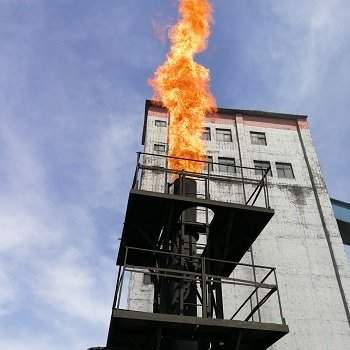| [Visitor (112.0.*.*)]answers [Chinese ] | Time :2022-05-11 |  The environment in which the gas expands (or the system) directly affects changes in temperature. Because gases may absorb or release heat to the environment during the expansion process, affecting temperature changes, to discuss this problem, we must first determine the environment in which the expansion process is located. Its temperature may rise, may fall, or it may not change. This has nothing to do with pressure. (PV=nRT, the ideal gas equation of state where the pressure is related to temperature, is not directly related.) Because P is also the effect and not the cause. It is not the change in P that causes the change in T, so it is inappropriate to say so) The environment in which the gas expands (or the system) directly affects changes in temperature. Because gases may absorb or release heat to the environment during the expansion process, affecting temperature changes, to discuss this problem, we must first determine the environment in which the expansion process is located. Its temperature may rise, may fall, or it may not change. This has nothing to do with pressure. (PV=nRT, the ideal gas equation of state where the pressure is related to temperature, is not directly related.) Because P is also the effect and not the cause. It is not the change in P that causes the change in T, so it is inappropriate to say so) |
| [Visitor (112.0.*.*)]answers [Chinese ] | Time :2022-05-11 |  Coke oven gas chemical composition Coke oven gas chemical composition
Coke oven gas is mainly composed of hydrogen and methane, accounting for 56% and 27% respectively, and has small amounts of carbon monoxide, carbon dioxide, nitrogen, oxygen and other hydrocarbons; Its low calorific value is 18250kJ/Nm3, the density is 0.4~0.5kg/Nm3, and the kinematic viscosity is 25×10'(-6)m2/s. According to the flow chart of the coke oven body and the drum cooling system, the waste gas from the coke oven has been condensed into a liquid in large quantities before entering, and at the same time, the coal dust entrained in the gas and the coke powder have also been collected, and the water-soluble components in the gas have also been dissolved into ammonia. Tar, ammonia, as well as dust and tar residue, flow together into the mechanized tar ammonia separation tank.After separation, the ammonia is recycled, the tar is sent to the centralized processing, and the tar residue can be back to the coal material, and the coking gas enters the primary cooler to be directly cooled or indirectly cooled to room temperature, at this time, the moisture and tar remaining in the gas are further removed. The gas after the initial cooler is mechanically trapped by the tar trap to remove the tar mist suspended in the gas by mechanical methods, and then enters the blower and is pressurized to about 19600 Pa (2000 mm water column). In order not to affect the future operation of gas refining, such as ammonium sulfide coloring, desulfurization liquid aging, etc., the gas is removed by the electric tar trap. In order to prevent naphthalene from crystallizing and precipitating from the gas at low temperatures, a naphthalene tower is set up before the gas enters the desulfurization tower for washing oil absorption naphthalene.The hydrogen sulfide in the gas is absorbed by a desulfurizer in the desulfurization tower, and at the same time, the hydrogen cyanide in the gas is also absorbed. The ammonia in the gas is absorbed by water or aqueous solution in the suction tower to produce liquid ammonia or ammonium sulfate. When the gas passes through the ammonia suction tower, because the reaction of sulfuric acid to absorb ammonia is an exothermic reaction, the temperature of the gas rises, in order not to affect the operation of crude benzene recovery, the gas enters the benzene washing tower after cooling down by the final cooling tower, and the low boiling point hydrogen carbonization compounds such as benzene, toluene, xylene and cyclopentadiene in the gas are absorbed with washing oil, and high boiling point substances such as styrene and naphthalmoron, at the same time, the organic sulfide is also removed... |
|

